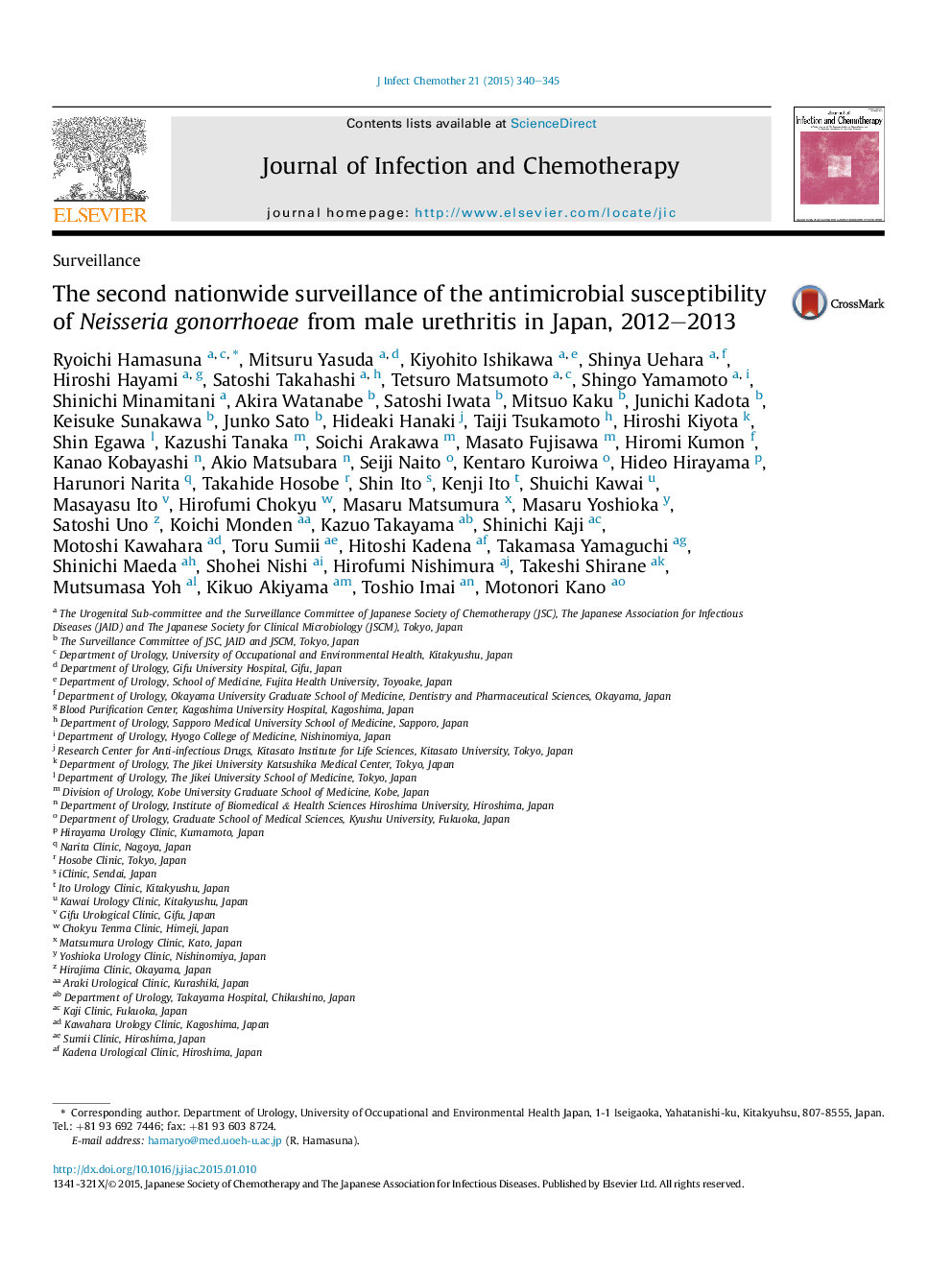| Article ID | Journal | Published Year | Pages | File Type |
|---|---|---|---|---|
| 3376807 | Journal of Infection and Chemotherapy | 2015 | 6 Pages |
Worldwide, the most important concern in the treatment of sexually transmitted infections is the increase in antimicrobial resistant Neisseria gonorrhoeae strains including resistance to cephalosporins, penicillins, fluoroquinolones or macrolides. To investigate the trends of antimicrobial susceptibility among N. gonorrhoeae strains isolated from male patients with urethritis, a Japanese surveillance committee conducted the second nationwide surveillance study. Urethral discharge was collected from male patients with urethritis at 26 medical facilities from March 2012 to January 2013. Of the 151 specimens, 103 N. gonorrhoeae strains were tested for susceptibility to 20 antimicrobial agents. None of the strains was resistant to ceftriaxone, but the minimum inhibitory concentration (MIC) 90% of ceftriaxone increased to 0.125 μg/ml, and 11 (10.7%) strains were considered less susceptible with an MIC of 0.125 μg/ml. There were 11 strains resistant to cefixime, and the MICs of these strains were 0.5 μg/ml. The distributions of the MICs of fluoroquinolones, such as ciprofloxacin, levofloxacin and tosufloxacin, were bimodal. Sitafloxacin, a fluoroquinolone, showed strong activity against all strains, including strains resistant to other three fluoroquinolones, such as ciprofloxacin, levofloxacin and tosufloxacin. The azithromycin MICs in 2 strains were 1 μg/ml.
